
Android Auto has become a standard part of brand new cars, but it’s something that older vehicles lack. Adding it can be complicated and can cost hundreds of dollars. But, did you know that you can actually add an Android Auto unit to any car in seconds for an affordable cost? Here’s how.
Aftermarket head units have been available for decades at this point, and support for both Android Auto and CarPlay has become normal for just about any option you buy today. Generally, these head units can be fairly affordable, but they can also get very pricey, and if you don’t have the experience, they can also require the help of costly professionals to install in some vehicles.
For quite some time, I’ve wanted to add Android Auto to my wife’s car, as her Hyundai Elantra is from that awkward time where touchscreens and Android Auto weren’t particularly common, but Bluetooth and AUX connections were standard. However, my last attempt at adding an aftermarket head unit didn’t work out super well. It was when I spent some time with Spotify Car Thing earlier this year that I thought how great it would be to have a similar device, but running Android Auto.
As it turns out, those devices exist! And they’re actually pretty easy to use.
Over the past several months, my wife has been using a 7-inch external Android Auto unit in her car that mounts to the dashboard and supports the wireless form of Android Auto. It plugs into her AUX connection to route audio through the car, and pulls power from a normal car power outlet.
It took literally seconds to install this, too. The included windshield mount turned out to be perfect in my wife’s car, but you could also use this as a dash mount or get creative with some DIY placement and other mounting options. This is effectively just a little tablet that runs Android Auto.
Admittedly, this isn’t the best-looking setup out there. The “IYING” device I picked up for her was one of the only options available earlier this year, and it doesn’t exactly have the best design. It’s very simple, but it works. The two cables hanging down slightly add to the not-so-great look, but they aren’t any worse than a charging cable you’d use to keep a smartphone juiced up while running Google Maps up on a dashboard mount.
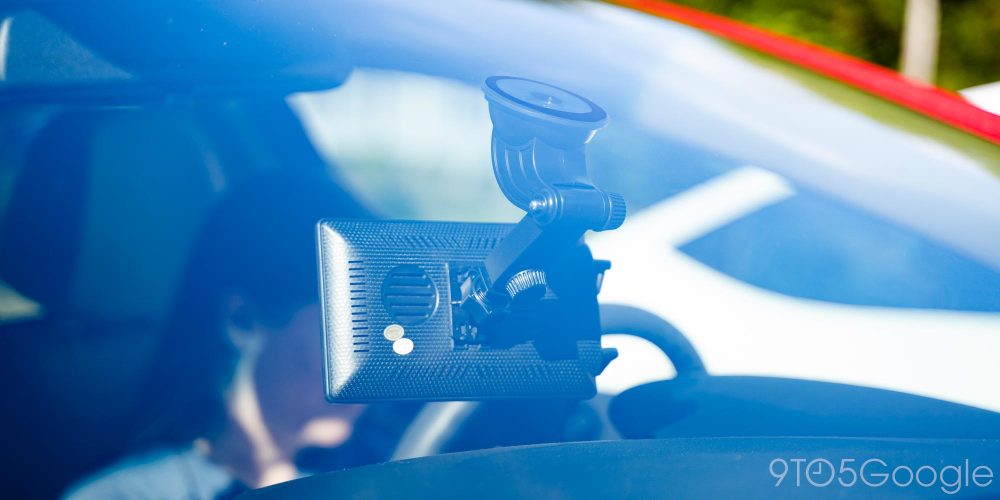
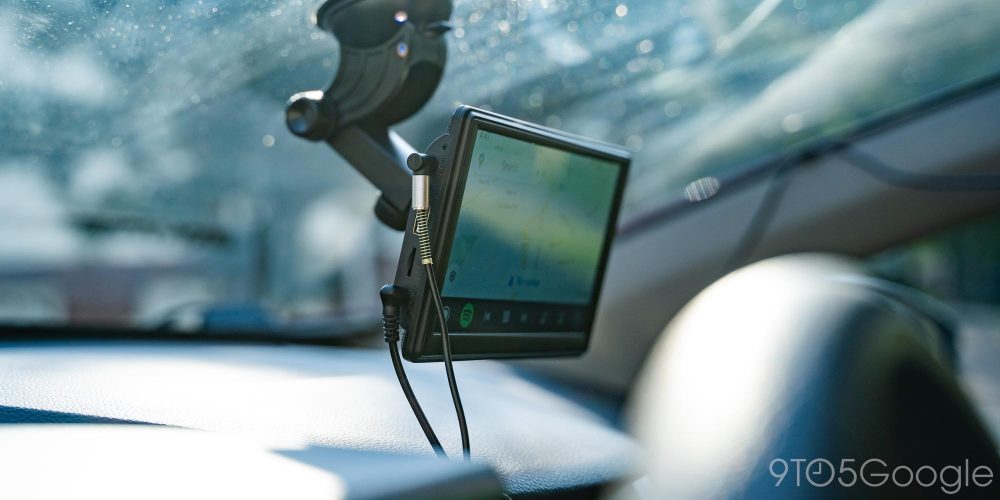
How does it perform? Quite admirably, overall.
The device automatically turns on when she starts up the car. The stock software is not exactly great. It feels very generic and forgettable, but it does have some useful features. You can mirror your phone’s screen or use this device as a traditional Bluetooth head unit to add support for wireless audio to a car that lacks the feature. The unit also supports adding a backup camera, but we didn’t opt to try that out, since it obviously complicates the setup/install process quite a bit.
The built-in 7-inch display is up to the challenge of being used in the car, too. I can’t describe it as super bright, but it’s bright enough to be used on a sunny day without any trouble reading what’s being shown. It’s merely a 1024×600 panel, though, so it’s not particularly sharp by any means. The one quirk that I did quickly notice was that the top portion of the panel cuts off some portions of the UI, but that doesn’t actually hinder usability at all.
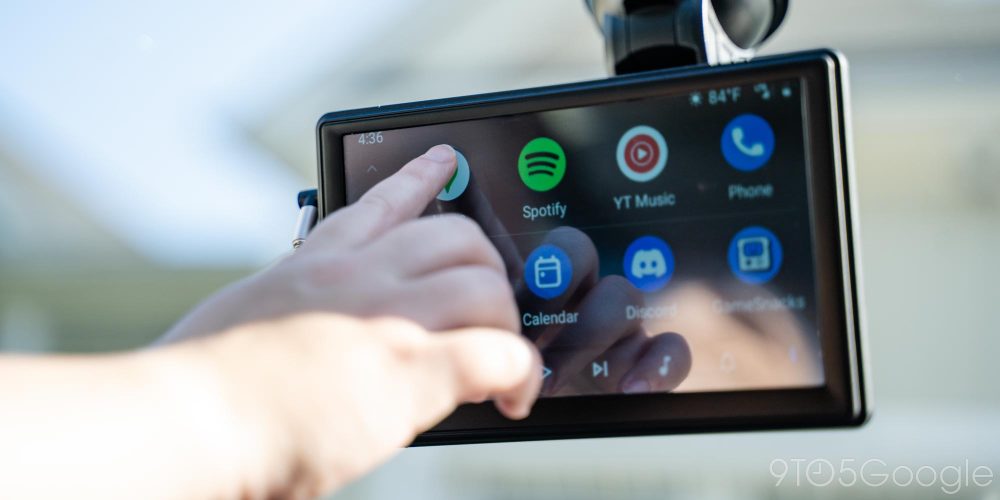
Meanwhile, Android Auto, when used wirelessly with her Pixel 5, generally seems to boot up within 40-60 seconds of turning on the vehicle. That’s a little slower than what’s built into my Subaru Crosstrek paired with a wireless Android Auto adapter but not too shabby! The only catch is that you’ll need to manually press a button to get Android Auto up on the screen, and that pop-up can sometimes time out.
Android Auto runs without any noticeable lag, and during her daily commute to work, she tells me it generally runs very reliably.
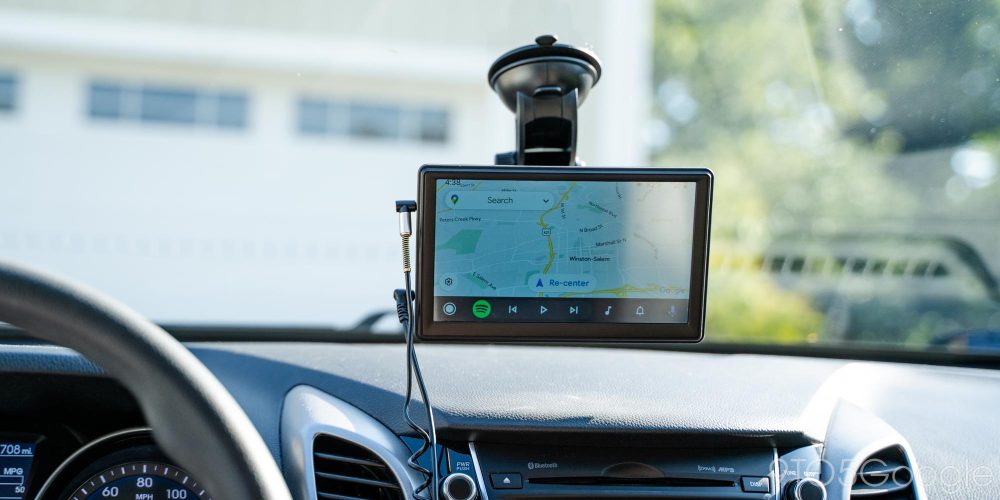
The main point of contention with this device has been making phone calls. It may be just her car in particular, but incoming phone calls seem to ignore the AUX connection and instead try to run through Bluetooth instead. As a result, she can’t hear the call, and either has to switch output to the phone’s speaker or earpiece or restart the call from her end. I couldn’t fully narrow down exactly why this was happening, but reviews of this device seem to back up that we’re not alone in this experience. I’ve unfortunately not really found an acceptable workaround for this. The only thing that’s worked so far has been using the built-in FM transmitter which results in drastically worse audio quality compared to AUX.
Is that a deal-breaker? For her limited use, not really. But it might be for you.
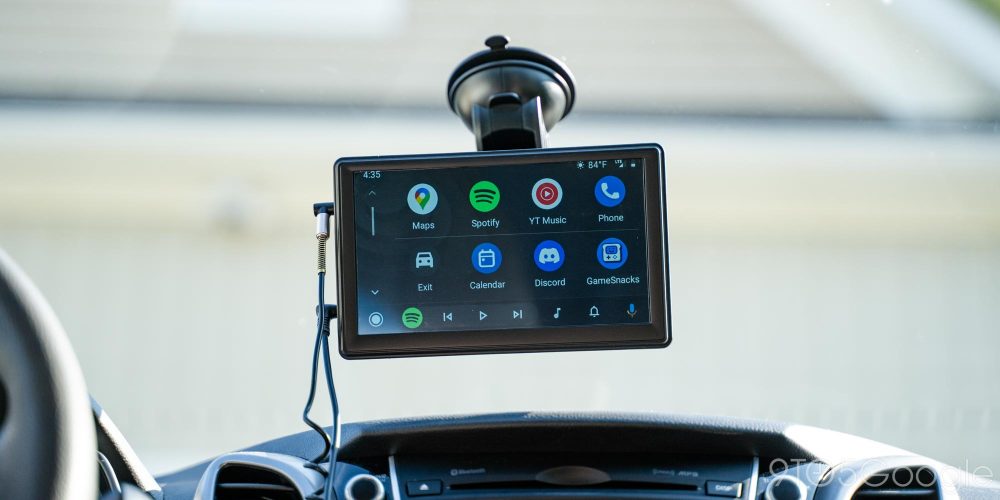
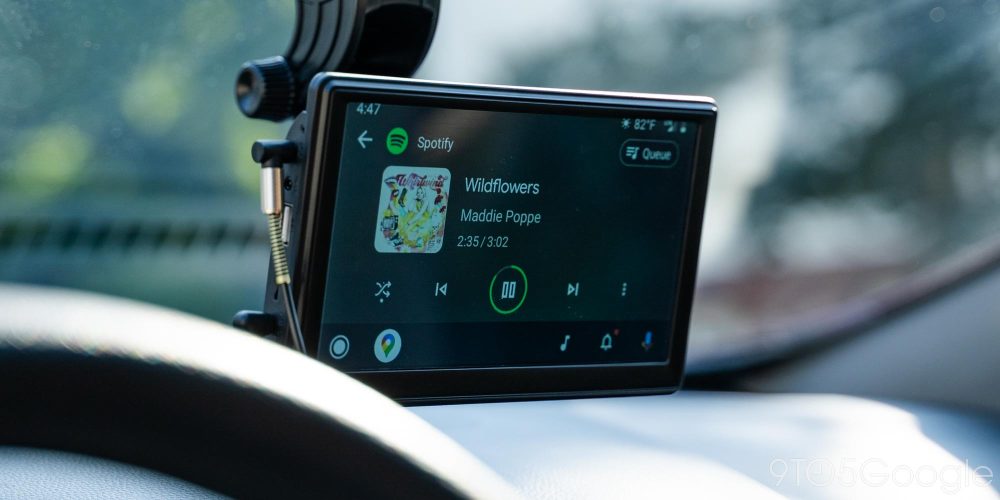
But for the roughly $250 we spent on this device, it’s been a worthwhile investment. She enjoys having Maps in sight easily while not having to let her phone sit in the heat the whole time she’s driving, and it was certainly easier to install than a more permanent option.
Plus, months after we purchased this device, more options have popped up and prices have come down. The IYING device we bought can now be had for just over $200.
We have yet to try any others, but there are quite a few now ready for purchase on Amazon. 9to5Mac had a great experience with the Intellidash Pro on the CarPlay side of things, and there’s an Android Auto model as well. “Carpuride” has a larger device that looks pretty slick, and there are even options that cost around $100 or less. Personally, this is a form factor I’m intrigued by – would you buy one?
More on Android Auto:
- Android Auto gets a new Discord app [Gallery]
- Review: Carsifi adds a quick-switch button to a wireless Android Auto adapter
- Android Auto redesign brings split-screen mode to in-car displays of all sizes
Author: Ben Schoon
Source: 9TO5Google



